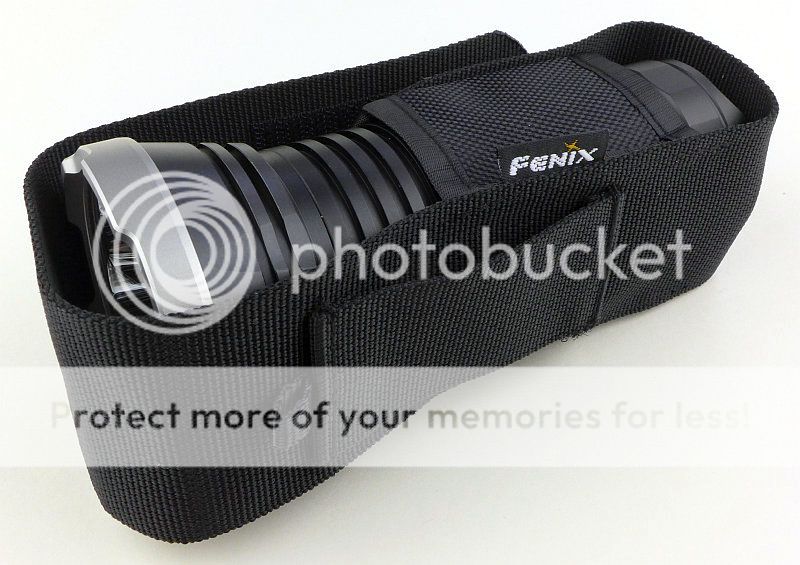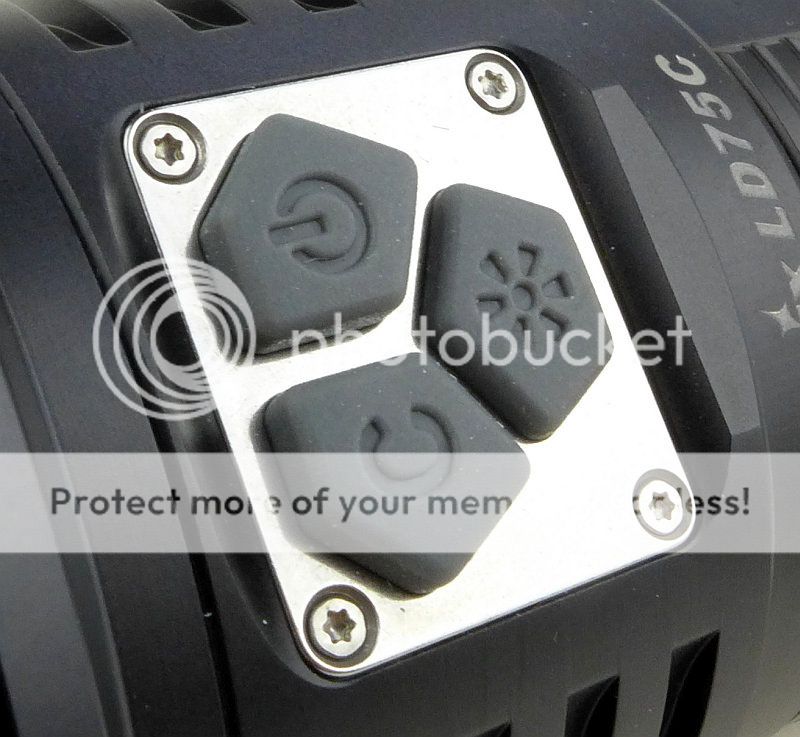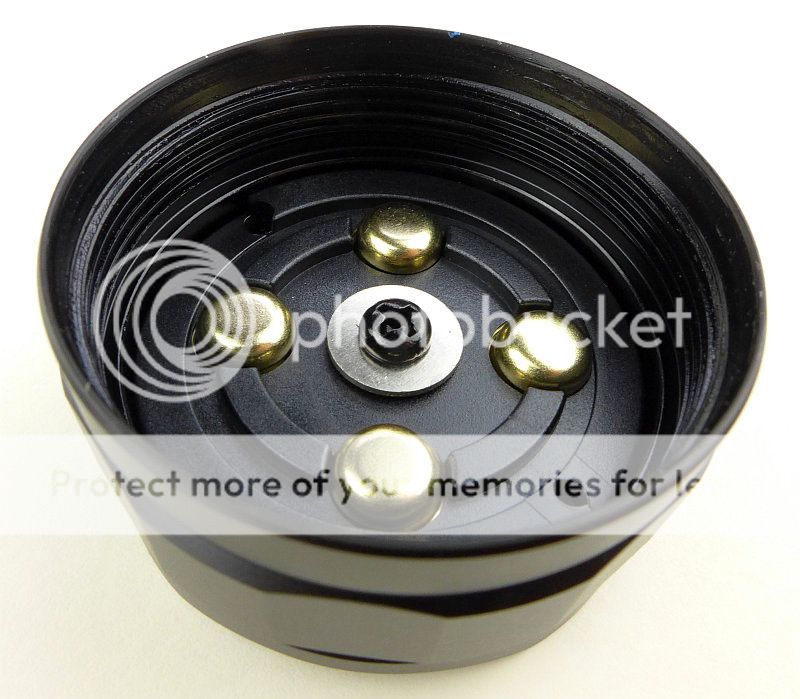---------------------------------------------------------------------------------------------------------------------
Author's Statement for Transparency and Disclosure
The test sample/s featured in this article have been provided for technical testing and review by the manufacturer. Test samples are retained by the reviewer following publication of the completed review for the purposes of long term testing and product comparisons.
All output figures and test results published in this review are the sole work of the reviewer, and are carried out independently and without bias. Test results are reported as found, with no embellishments or alteration. Though best endeavours are made to maintain the accuracy of test equipment, the accuracy of these results is not guaranteed and is subject to the test equipment functioning correctly.
----------------------------------------------------------------------------------------------------------------------
Author's Statement for Transparency and Disclosure
The test sample/s featured in this article have been provided for technical testing and review by the manufacturer. Test samples are retained by the reviewer following publication of the completed review for the purposes of long term testing and product comparisons.
All output figures and test results published in this review are the sole work of the reviewer, and are carried out independently and without bias. Test results are reported as found, with no embellishments or alteration. Though best endeavours are made to maintain the accuracy of test equipment, the accuracy of these results is not guaranteed and is subject to the test equipment functioning correctly.
----------------------------------------------------------------------------------------------------------------------
The LD75C is Fenix's latest 'extreme-output', 'compact' light. Just based on the White output, the LD75C is a great light, but throw in the high power coloured output as well and you have a super package for lots of lighting fun.

Taking a more detailed look:
The packaging is in keeping with a lot of the Fenix range, and the box is smaller than I expected it to be.

Inside you find the LD75C, a holster (excellent news), a spare O-ring and a plaited lanyard.

Though basic, the holster is a very welcome addition.

It has a fixed belt loop and smaller clip-loop.

As soon as I got the LD75C out I wanted to compare it to the TK75. The smaller head, really makes a difference for 'carryability'.

A close look at the LD75C's switch group.

The LD75C will comfortably tail-stand and has two lanyard slots.

There isn't a lot of metal to work with, but there are some cooling fins.

Details of the grip machined into the battery tube.

A first look into that emitter packed head.

The LD75C's four XM-L2 LEDs and the XM-L Colour LED in the centre.

A bit of a closer look at the LEDs. The Colour LED has four separate dies for Red, Green, Blue and White. When we look at the beam, you will see the effect of the slightly different positions of the dies themselves on the Colour beam.

There are four sprung-plunger contacts in a rotating tail-cap insert. The two holes at 4 and 10 o'clock engage with pins on the battery tube to set the position of the insert.

The previously mentioned locator pins on the battery tube.

Inside the battery tube, all four contacts are springs.

The LD75C can run on two…

..or all four cells.

Colour! (OK as I'm using this word a lot, obviously being from the UK I'm using the English spelling, so for all my US readers, please read colour as color)

For scale, the LD75C with its four cells.

The beam
Please be careful not to judge tint based on images you see on a computer screen. Unless properly calibrated, the screen itself will change the perceived tint.
The indoor beamshot is intended to give an idea of the beam shape/quality rather than tint. All beamshots are taken using daylight white balance. The woodwork (stairs and skirting) are painted Farrow & Ball "Off-White", and the walls are a light sandy colour called 'String' again by Farrow & Ball. I don't actually have a 'white wall' in the house to use for this, and the wife won't have one!
Starting indoors, the LD75C's main white beam has both a very wide spill, and a strong hotspot. It also has one of the messiest outer spills of any light I've seen thanks to the compound reflector and the beam interacting with the crenelated bezel.

Now some fun with the colour beams. All at the same exposure, these are the four outputs of the Coloured LED. Note that the LD75C was clamped in place and the beam colour changed. You can see the slight shift in the beam position relative to each other as the colours are cycled through. This is due to the actual dies being in the four quadrants of the LED capsule.

Before looking at the outdoor beam, here is the trusty TK41 reference light. The exposure is the same as the next beamshot of the LD75C.

BOOM!! Yes that is 4420lm.

Then a bit of fun with the coloured beams. That Blue does odd things to the eyes, and this is the brightest coloured output I've used.

Modes and User Interface:
The LD75C has a three button interface. The buttons have a Power symbol, 'C', and Sun symbol impressed on them.

These provide access to Turbo, High, Mid, Low, Eco and Strobe, from the White LEDs plus White, Red, Green, Blue and Flashing modes from the Multi-colour LED.
Steady White output modes are accessed using the button with the Power symbol.
Press and hold for 0.5s to switch ON to the last used mode.
When ON press to cycle through Turbo, High, Mid, Low, Eco, Turbo… etc.
Press and hold for 0.5s to switch OFF.
Coloured output modes are accessed using the 'C' button.
Press and hold for 0.5s to switch ON to the last used mode.
When ON press to cycle through Blue, Green, Red, White, Slow Flashing Red, Blue/Red strobe flashing, Blue… etc.
Press and hold for 0.5s to switch OFF.
The Sun symbol button gives direct access to Turbo and Strobe.
Press and hold the Sun button for 1s to enter Turbo from any state.
Press again to return to previous output mode (white or colour).
Press the Sun button briefly to enter Strobe from any state.
Press again to return to previous state.
The LD75C also includes a power indication with the coloured LED.
From OFF double click the 'C' button. The Coloured LED will light up as follows:
Constant Green – 'sufficient' power
Constant Blue – 'high' power
Constant Red – 'Low' power
Flashing Red – 'critical' power
This only works for 18650 cells.
Batteries and output:
The LD75C runs on 2 or 4 x 18650 and 4 or 8 x CR123.
To measure actual output, I built an integrating sphere. See here for more detail. The sensor registers visible light only (so Infra-Red and Ultra-Violet will not be measured).
Please note, all quoted lumen figures are from a DIY integrating sphere, and according to ANSI standards. Although every effort is made to give as accurate a result as possible, they should be taken as an estimate only. The results can be used to compare outputs in this review and others I have published.
| ___________________________________________ | ________________________________ | ________________________________ |
| Fenix LD75C using 4x 3400mAh ARB-L2 | I.S. measured ANSI output Lumens | PWM frequency or Strobe frequency (Hz) |
| ___________________________________________ | ________________________________ | ________________________________ |
| Turbo | 4420 | 0 |
| High | 1876 | 0 |
| Medium | 678 | 0 |
| Low | 226 | 0 |
| Eco | 51 | 0 |
| Red | 257 | 0 |
| Green | 166 | 0 |
| Blue | 281 | 0 |
| RGB-White | 274 | 0 |
| Red Flash | 262 | 2 |
| Red/Blue Strobe | 264 | 10 |
| Strobe | 2636 | 16 & 7.14 |
* Beacon and Strobe output measurements are only estimates as the brief flashes make it difficult to capture the actual output value.
Though the Green output measures a lot lower than the Red and Blue, due to the eye's greater sensitivity to Green light it appears to be a similar brightness to the eye.
The LD75C will run on 2x18650, and cleverly Fenix have designed it so that only two of the four white LEDs light up when this is the chosen power source. All main beam white output levels are halved. Coloured output appears to be the same (this was not measured, but checked by eye).
Peak Beam intensity measured 61300lx @1m giving a beam range of 495m.
There is parasitic drain but as the LD75C has two pairs of cells, and can also run on only one pair, these have been checked individually.
('Left and 'Right' is as viewed from the tail-cap end with switches at the top)
Left Pair (all 4 cells in use) drain is 32.2uA, and at this drain 3400mAh cells will be fully depleted in 12.05 years.
Right Pair (all 4 cells in use) drain is 25uA, and at this drain 3400mAh cells will be fully depleted in 15.51 years.
One pair (only 2 cells in use) drain is 54.8uA, and at this drain 3400mAh cells will be fully depleted in 7.08 years.
For the runtime trace I've used the LD75C with all four 18650s, and with only two. Despite the fact that it uses only two LEDs when using two cells, the relative trace is not simply half the one for four cells. With four cells you see a couple of clear step downs to lower modes. With only two cells, there is a step down, but only one, and later than with four cells.

Troubleshooting
This is a new section I am adding to mention any minor niggles I came across during testing, in case the information helps anyone else.
No issues were encountered during testing.
As per the description of this section, this information is provided in case anyone else finds a similar 'issue' that might be fixed in the same way.
The LD75C in use
I don't want to start with a negative, but I'm afraid I have to say I don't like 'press-and-hold' to turn on. This delay in switching on and off, even though only 0.5s, just makes the light feel less immediate in its operation. This is not aimed just at the LD75C, but any light using this method.
I'll have to continue on this negative trend as I dislike strobe, and see no real benefit in having it. You only end up strobing yourself if you use it, and it is nasty with so much power.
These complaints are really only expressing my disappointment that those three buttons were not used differently. If I could change it, I'd have the Power and 'C' button act immediately to turn on and off, and use the third button as a mode changer (with Strobe cast out never to be seen again). Fenix, I hope you read this and release a LD75C 2016 edition along these lines.
Despite these criticisms, the LD75C is seriously fun. The coloured output is powerful enough to create interesting effects you don't really experience with lower power colour lights.
4420lm in this size package makes it an extreme performer and thanks to its compact head, it is easy to carry.
OK so I'm forgiving it its interface for all that power and colour. It has currently ousted all my other 4x18650 lights in favour of this little colourful powerhouse.
(Take care when inserting cells, as like many other 4x18650 lights without a battery carrier, there are a few sharp corners that you could tear a cell wrapper on.)
With the ability to mix main beam, on any level, with the coloured beam, on any setting, you have loads of different beams at your disposal.
For outdoor walking, I found that using the Coloured LED's white output (which is very floody) mixed with the Main beam on Mid, gave a really good all round beam for showing up the ground and into the distance.
Here the tree is about 60m away, and the lack of illumination on the next tree shows the effect of the hotspot's throw.

Moving to 300m the LD75C is running out of steam a bit, but still lights up the tree. Cosidering the compact size of this light it is impressive performance.

Time for some serious fun with those colours. A bit of (slightly naughty as I'm not sure the police will like it) Red/Blue Strobe.

I'm having a phase shift captain….

And I stumble across the magical glade where the fairies live.

The mythical RGB tree.

Well just let you imagination run free and go out and do some 'painting with light'. The LD75C has plenty of colour to let your creativity flow.
So, yes, I have got past that less than ideal interface and embraced all the LD75C has to offer.
Review Summary
| _______________________________________________ | _______________________________________________ |
| Things I like | What doesn't work so well for me |
| _______________________________________________ | _______________________________________________ |
| 4420lm output | Press-and-hold to switch on/off interface |
| High power RGB colour output | 'Nasty' strobe |
| Comes with Holster | Messy outer spill |
| Can run on only 2 cells if needed | Could damage cell wrappers on sharp corners |
| Compact and easy to carry | |
| Low parasitic drain | |
| Power level indication |

If you enjoyed my reviews, please remember to 'Like' me on Facebook and follow me on Twitter @Subwoofer_CPF
to get all the latest updates and news.
You can also find exclusive insights on Instagram and Pinterest





to get all the latest updates and news.
You can also find exclusive insights on Instagram and Pinterest


